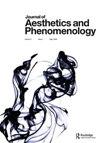Intuitive cities: pre-reflective, aesthetic and political aspects of urban design
IF 0.2
0 PHILOSOPHY
引用次数: 10
Abstract
Abstract Evidence affirms that aesthetic engagement patterns our movements, often with us barely aware. This invites an examination of pre-reflective engagement within cities and also aesthetic experience as a form of the pre-reflective. The invitation is amplified because design has political implications. For instance, it can draw people in or exclude them by establishing implicitly recognized public-private boundaries. The Value Sensitive Design school, which holds that artifacts embody ethical and political values, stresses some of this. But while emphasizing that design embodies implicit values, research in this field lacks sustained attention to largely unconscious background biases or values, rooted in cultural attitudes and personal interests, that lead theorists and planners—often too narrowly—to promote design organized around specific values such as defensibility. In examining these points, I draw on J. J. Gibson, a central figure for some writing on aesthetics and cities, and whom pragmatists and phenomenologists in turn influenced. Taking a cue from pragmatists in particular, I argue that Gibson’s perceptual theory of affordances entails a theory of values, meaning our perception and therewith movements are inherently value-based. I advocate design that accounts for relatively constantly held values such as safety, while also handling the vast pluralism that exists and not crushing the aesthetic vibrancy of city life.直观的城市:城市设计的前反思、美学和政治方面
抽象的证据证实,审美参与会影响我们的动作,通常我们几乎没有意识到。这引发了对城市内部的预反思参与以及作为预反思形式的美学体验的研究。这种邀请被放大了,因为设计具有政治含义。例如,它可以通过建立隐含认可的公私边界来吸引或排斥人们。价值敏感设计学派(Value Sensitive Design school)认为,文物体现了道德和政治价值,强调了这一点。但是,在强调设计体现了隐含价值的同时,这一领域的研究缺乏对大部分无意识的背景偏见或价值观的持续关注,这些偏见或价值观植根于文化态度和个人兴趣,导致理论家和规划者(通常过于狭隘)无法促进围绕特定价值观(如防御性)组织的设计。在研究这些观点时,我引用了j·j·吉布森,他是一些关于美学和城市的著作的核心人物,实用主义和现象学家反过来又影响了他。我特别从实用主义者那里得到了启示,我认为吉布森关于启示的感知理论包含了价值理论,这意味着我们的感知以及由此产生的运动本质上是基于价值的。我提倡的设计应该考虑到相对稳定的价值观,比如安全,同时也要处理存在的巨大多元化,而不是破坏城市生活的审美活力。
本文章由计算机程序翻译,如有差异,请以英文原文为准。
求助全文
约1分钟内获得全文
求助全文

 求助内容:
求助内容: 应助结果提醒方式:
应助结果提醒方式:


